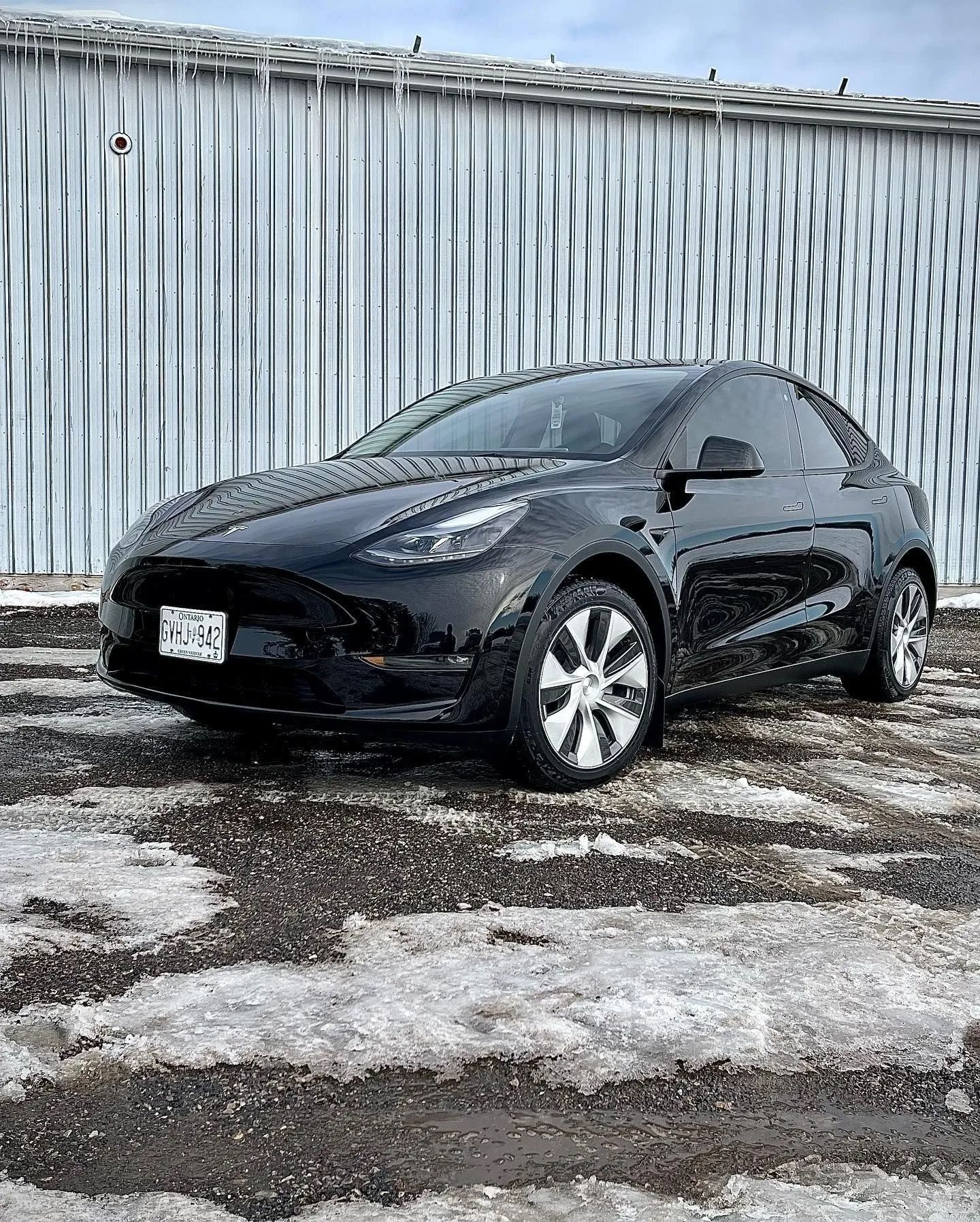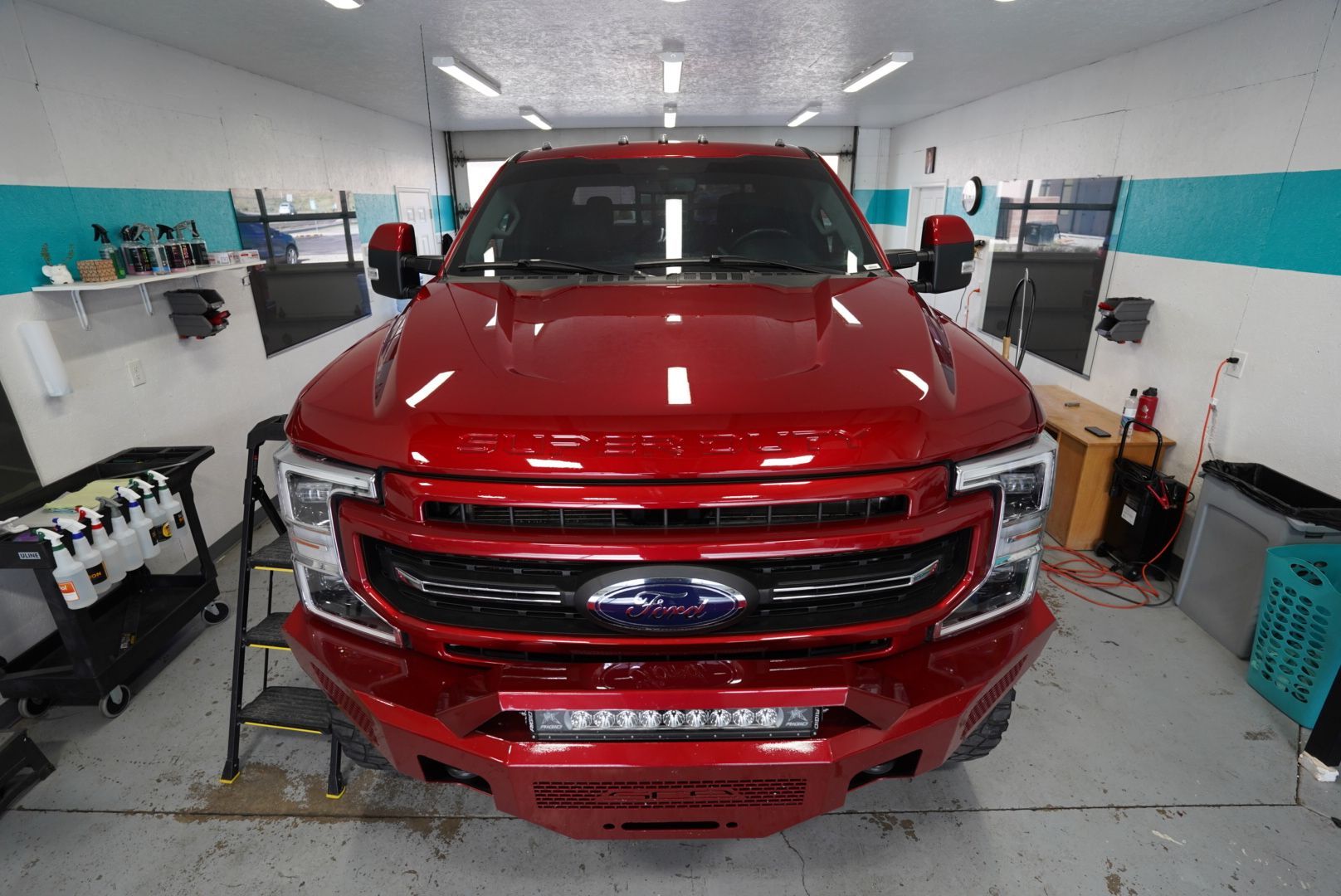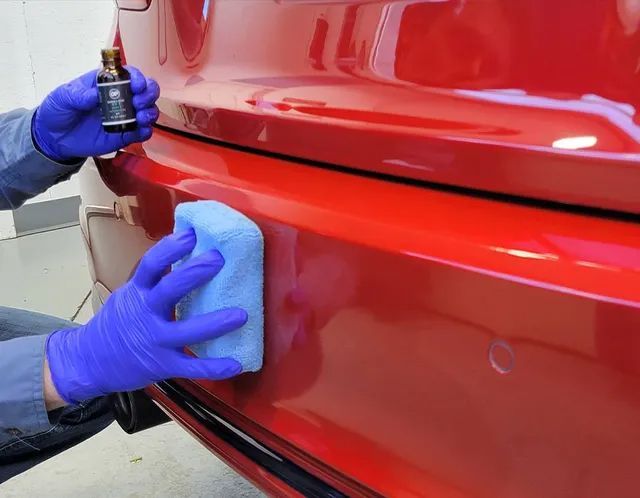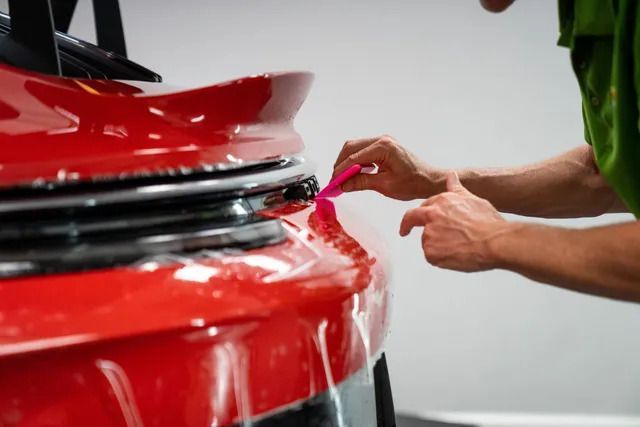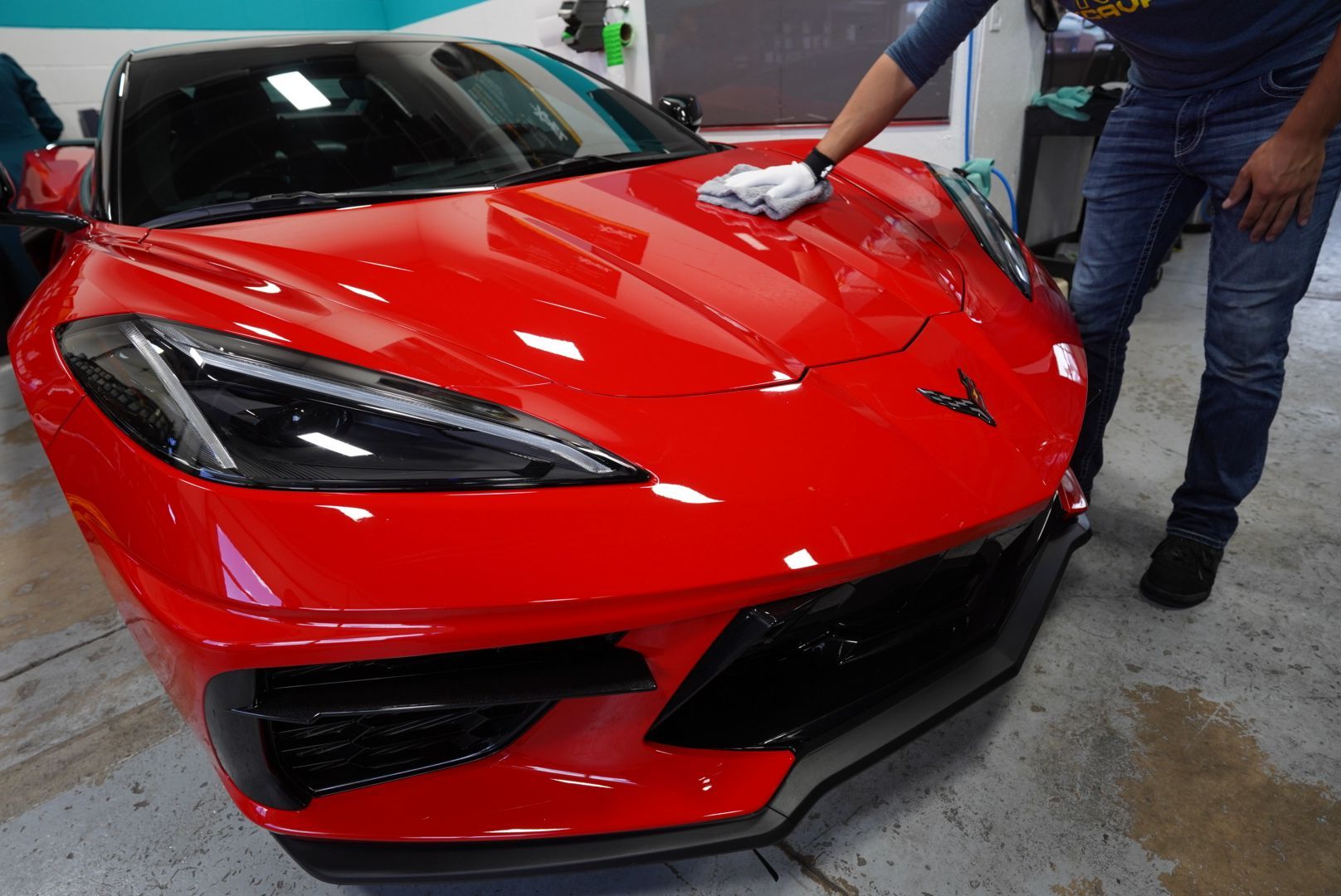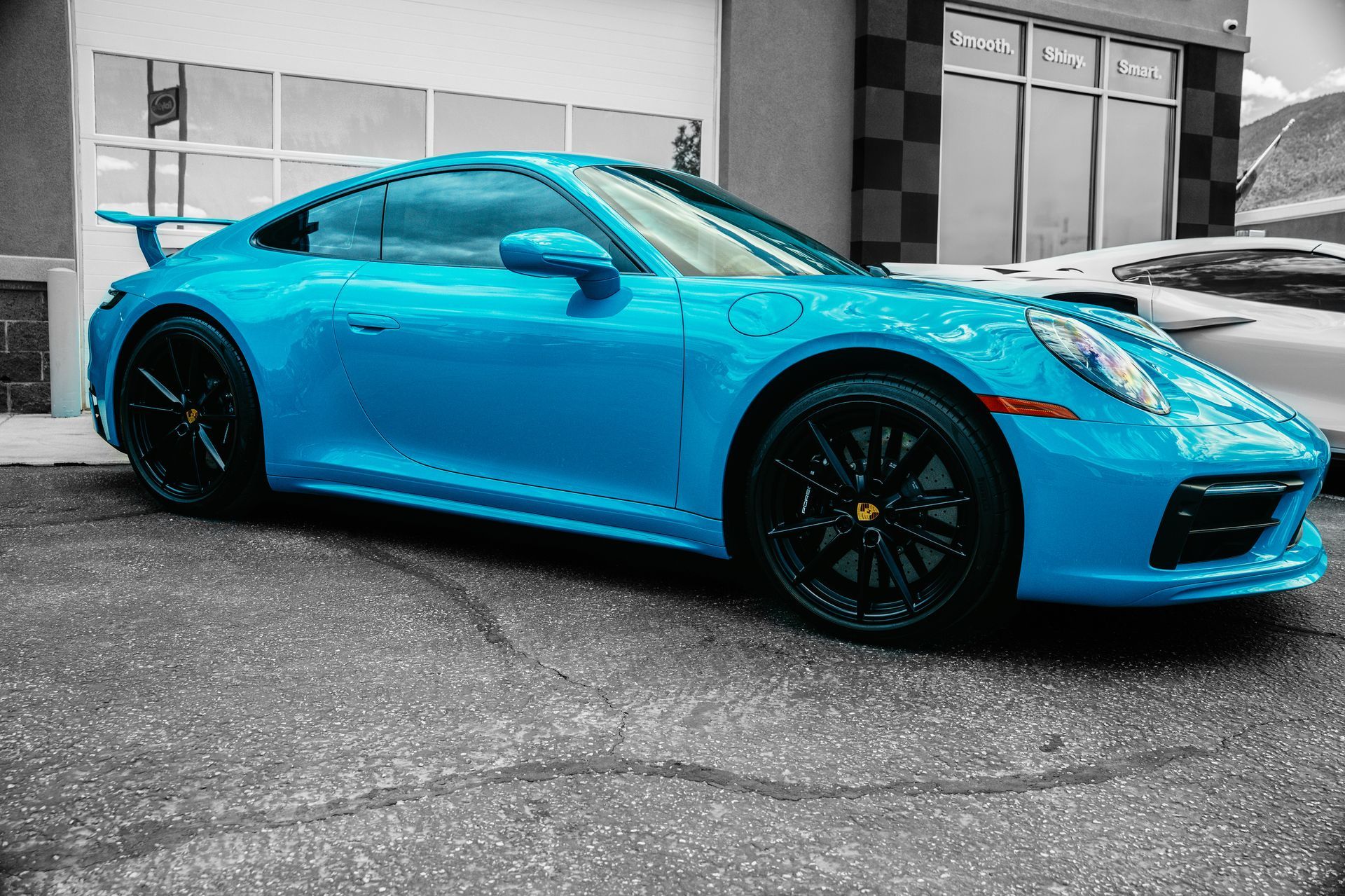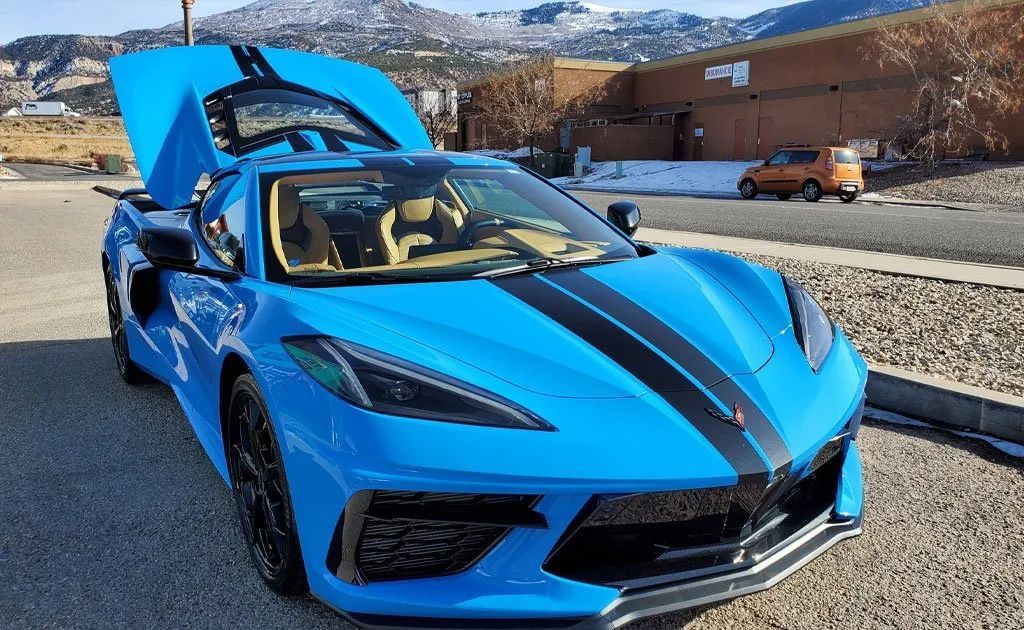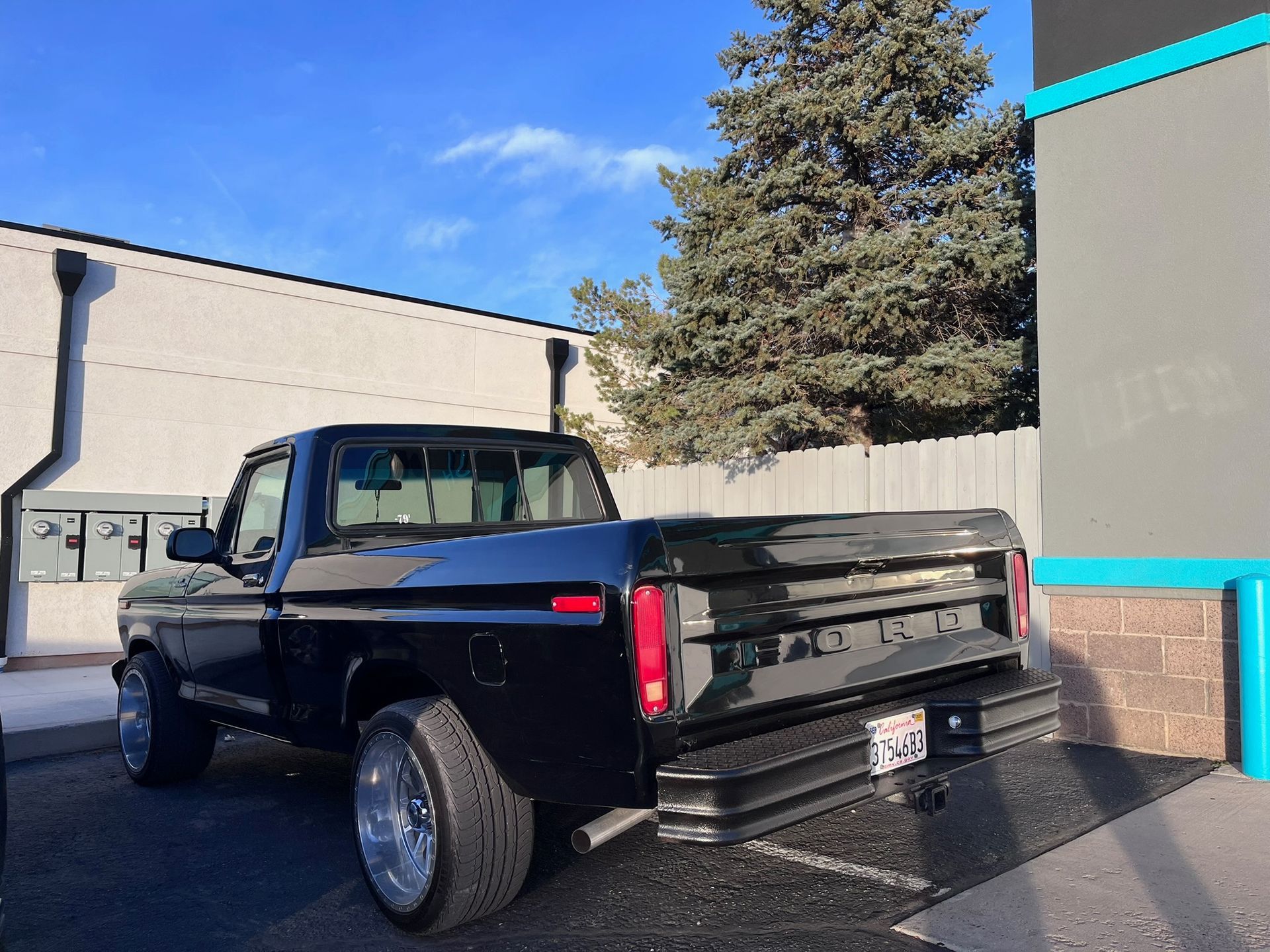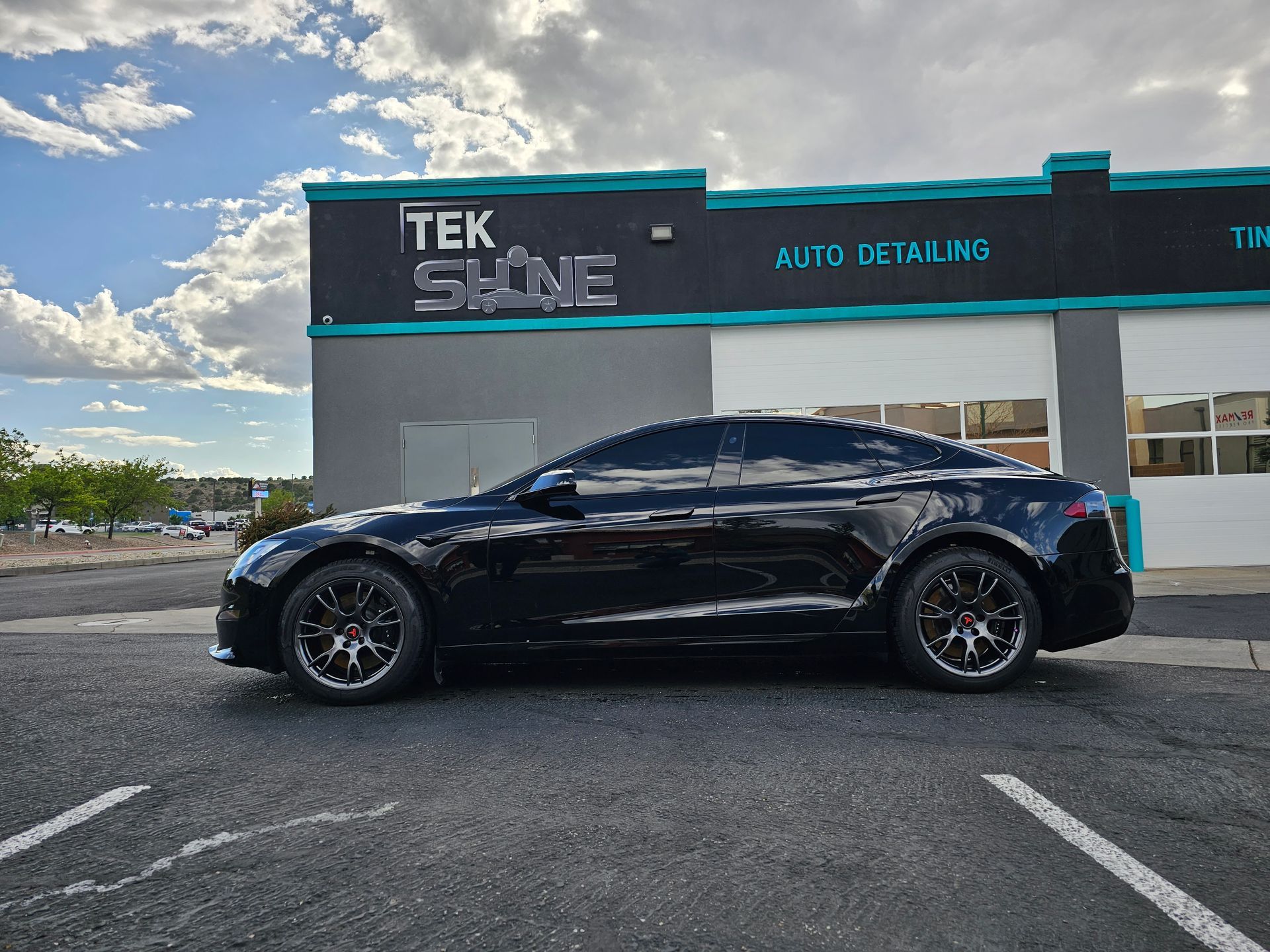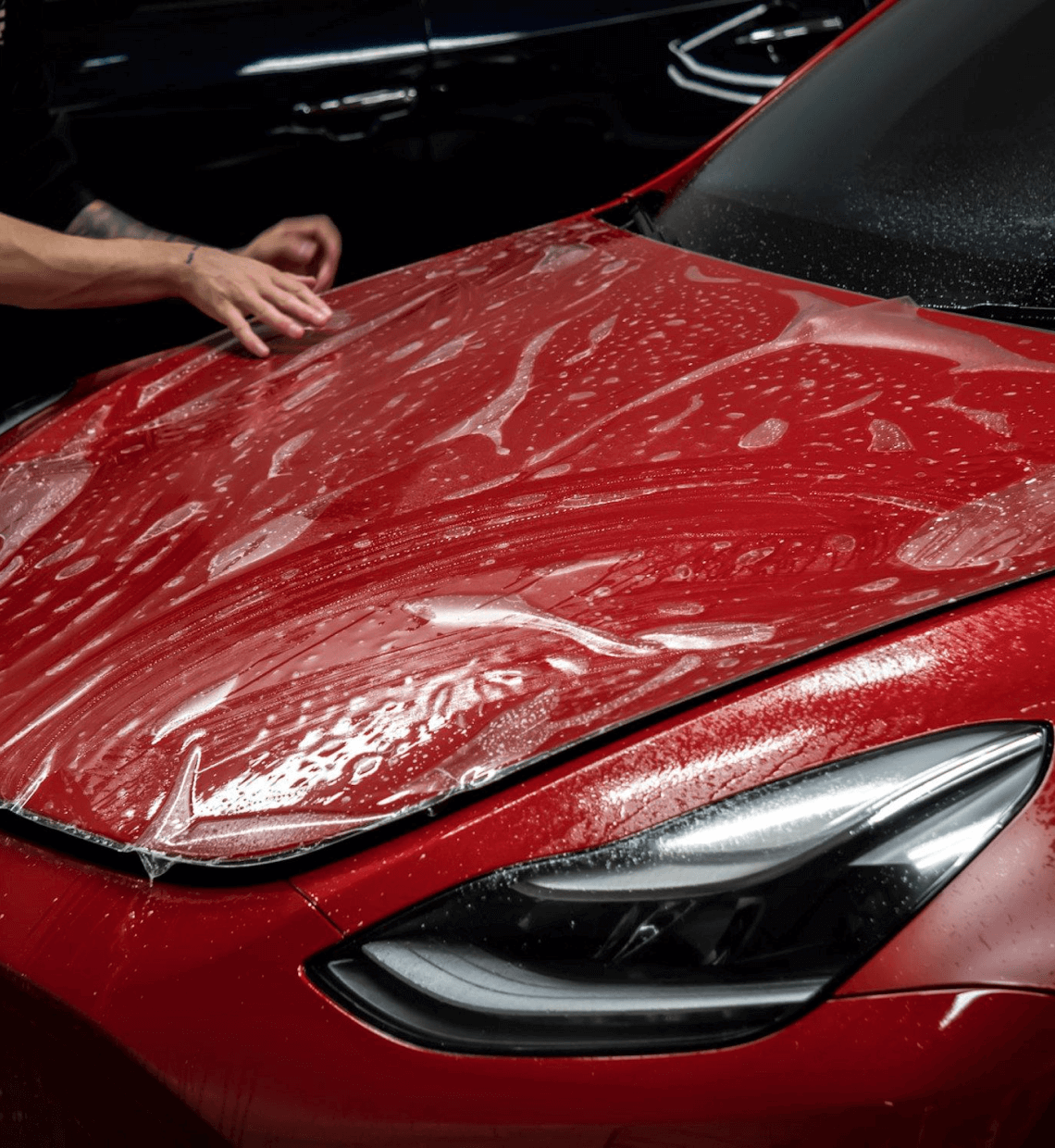5 Myths About Paint Protection Film Debunked: Essential Facts You Should Know
When protecting your car’s paint, many misconceptions about Paint Protection Film (PPF) are floating around. You might have heard that Paint Protection Film (PPF) is only for fancy cars or costs a fortune, which may discourage you from considering it for your vehicle. The reality is quite different! PPF applies to all types of cars and can save you money in the long run by avoiding costly repairs. In this article, we will dispel five common myths about PPF. Let’s uncover the truth behind these beliefs so you can make informed decisions about your car’s care without any worries holding you back.
The article "5 Common Myths About Paint Protection Film Debunked" addresses prevalent misconceptions such as PPF being excessively costly, limiting a vehicle's resale value, and only suitable for luxury cars. By presenting accurate facts, we clarify that PPF is an investment that protects your vehicle's aesthetics and can enhance its market value, regardless of the car type.
Debunking Myths About Paint Protection Film
A common PPF myth is that it's only for luxury cars. This misconception can deter many vehicle owners from considering this protective solution. Any vehicle, regardless of its price or type, can effectively apply PPF. It's crucial to understand that a well-maintained appearance benefits all cars—even everyday models like sedans and hatchbacks. Owners of vehicles like the Hyundai Creta have embraced PPF as a safeguard against minor scratches, chips, and environmental damage, proving that protection isn't limited to high-end vehicles.
Some car owners believe that removing paint protection film will damage their vehicle's paintwork. Fortunately, advanced adhesive technologies in modern PPF systems enable safe removal without damaging the underlying surface. If professionally executed, removal should not complicate your overall car care routine but rather preserve its condition over time.
As we continue exploring these myths, let's also address a common misunderstanding about the effectiveness of PPF.
Another widely held belief is that paint protection film can shield your car against all forms of damage. While PPF stands strong against many minor wear-and-tear issues, it cannot guard against significant accidents or impact damages. Consider it akin to a screen protector on a smartphone—it absorbs daily risks but still ultimately needs replacement if overly damaged or compromised. Thus, while PPF offers incredible protection against chips and minor scratches caused by road debris or errant shopping carts, it doesn't promise impenetrability in every situation.
Finally, while examining the suitability and capabilities of Paint Protection Film in general.
It's essential to assess the film's quality factors as well. We recommend high-quality aliphatic TPU films over lower-grade materials like PVC because they resist yellowing better over time, ensuring longer-lasting clarity and durability for your vehicle's exterior. As you explore PPF options, always seek products with proven longevity and protective capabilities.
Understanding these myths creates a foundation for further insights into specific aspects of paint protection film and its visibility characteristics.
Myth 1: Paint Protection Film Is Completely Invisible
The notion that paint protection film is entirely invisible contributes to misconceptions surrounding its use. While high-quality PPFs aim to blend seamlessly with your vehicle's original paint, they are not completely undetectable. Despite our desire for a flawless solution that preserves the beauty of our cars, reality presents certain complexities.
AutoCar conducted a survey and found that 88% of users could perceive the PPF's presence under certain lighting conditions. This statistic highlights an important aspect: the visibility of the film often depends on the environment. In typical daylight or shade, a well-installed high-quality PPF will look quite seamless, but direct sunlight can expose inconsistencies that might not be as apparent in low-light situations.
Common Visibility Issues
Despite technological advancements, consumers should be aware of common visibility issues when considering PPF.
- Edge Visibility: If you haven't applied precut films meticulously, they may occasionally reveal edges. These edges can become more noticeable upon close inspection and might require skilled installation to conceal them effectively.
- Seam Lines: For larger panels where two pieces of film intersect, seam lines can sometimes appear visible. An experienced installer will know how to position these seams in less visible areas, ensuring a less conspicuous appearance.
- Texture Discrepancies: Depending on the film's quality, there might be slight texture variations compared to the original paint. Some lower-grade films could have a matte finish, which contrasts against glossy painted surfaces.
What remains crucial is how unobtrusive the film appears under everyday conditions rather than solely focusing on its invisibility claim. Following this line of thinking, let's delve into another widely held belief about the protective capabilities of paint protection films.
Myth 2: Paint Protection Film Makes Your Car Invincible
While PPF provides a robust layer of protection against minor abrasions, it is incorrect to believe that it will make your car invincible. PPF serves as an impressive shield but not an impenetrable one. Think of it like the armor on a knight’s suit; it’s designed to take hits and protect against everyday skirmishes, yet a well-aimed blow can still cause damage. This analogy shows that in many ways, PPF is effective, but it's important to know its limits.
Limitations of PPF
PPF does its job remarkably well; for instance, it effectively protects against rock chips, minor scratches, and stains that could spoil your car's finish. By preserving the paint underneath, it contributes not only to aesthetic appeal but also to the resale value of your vehicle. According to recent studies, PPF layers are capable of withstanding up to 80% of minor scratches, offering assurance against everyday driving conditions and road hazards [DATA]. However, it's vital to remember that no material offers absolute protection.
Transitioning from these everyday hazards, it's essential to consider how PPF responds to greater challenges.
Major Damage
Despite its exceptional protective qualities, major impacts—like those from high-speed collisions or large, sharp objects—can breach the film and damage the vehicle's paint beneath it. For example, think about driving over a piece of debris on the highway; if the object is substantial enough, it can puncture through the PPF and cause minor scratches or chips directly on the paint. This limitation highlights the fact that although PPF protects against normal wear and tear, it shouldn't serve as a guarantee against all types of damage.
Understanding these nuances equips vehicle owners with insights needed for effective car maintenance while helping them maximize the benefits of PPF without unrealistic expectations. This awareness naturally leads to exploring another common misconception regarding who requires this type of protection.
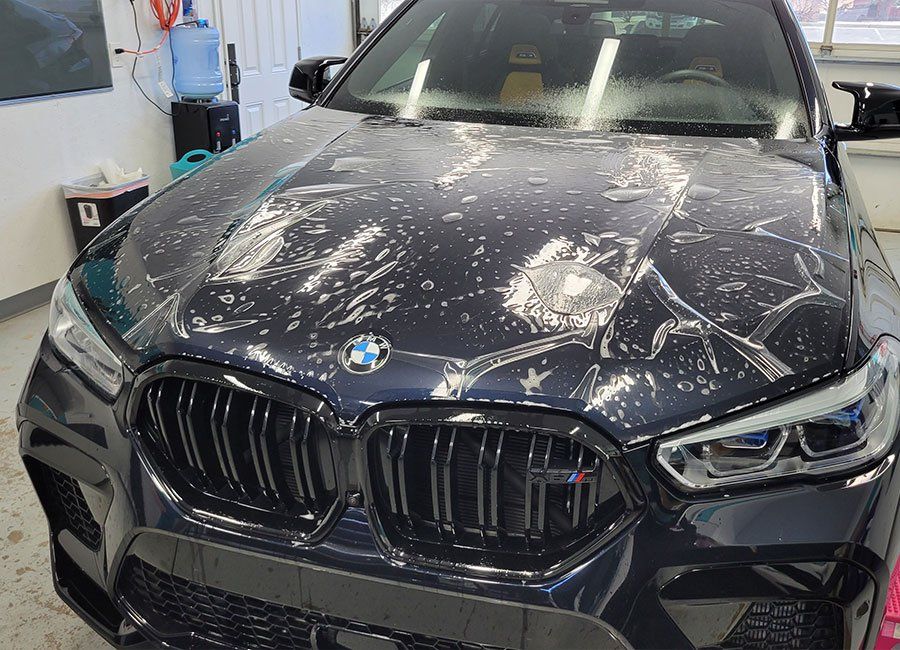
Myth 3: Only New Cars Need Protection Film
This myth suggests that PPF is only beneficial for newly purchased vehicles, which is far from the truth. Even older vehicles can benefit significantly from such protection. Many car owners mistakenly think that once a vehicle has already endured wear and tear, it’s past the point where any protective layer could make a difference. However, that’s simply not the case; applying PPF to an older car can result in remarkable improvements.
Benefits for Older Cars
Applying PPF to an older car can dramatically improve its appearance. Imagine driving around with a fresh sheen to your paintwork—your vehicle may have accumulated chips or minor scratches over the years, but the right film can work wonders by hiding those imperfections. It provides a sleek look and forms a layer of defense against further damage while enhancing aesthetic appeal.
Protecting Restorations
Many collectors and restoration experts use PPF on older, restored cars for precisely these reasons.
When significant effort goes into restoring a classic vehicle, preserving that hard work against future wear and tear becomes paramount. The original paint is often among the most valuable aspects of such restorations; even minor scuffs can diminish its charm and market value. By applying PPF, restoration enthusiasts can safeguard their investment from environmental damage as well as unintentional mishaps.
With advancements in technology, PPFs now feature self-healing qualities that allow them to recover from minor scratches over time. This guarantees the protection of your investment today and its aesthetic appeal for years to come. Whether you drive an older daily commuter or a prized collectible, paint protection film stands out as an essential component in caring for your vehicle's aesthetics and longevity.
Understanding the insights surrounding PPF can truly reshape your perception of its value. Next, we will examine whether the initial cost of this protection film aligns with its numerous benefits.
Myth 4: Paint Protection Film Is Too Expensive
The notion that Paint Protection Film (PPF) is prohibitively expensive often stems from a misunderstanding of its actual value. Many car owners glance at the upfront costs and feel overwhelmed, believing they simply cannot justify the price. However, this perception can be misleading, especially when considering the potential financial implications down the road.
Knowing that protective film offers not just aesthetics but also peace of mind could sway many skeptics toward investing.
You should not overlook the long-term savings you're fostering by mitigating these future expenses with protection film.
Long-term Savings
Consider the cost of potential paint repairs and maintenance without PPF. For instance, replacing or repairing a painted surface significantly detracts from your vehicle's resale value. Additionally, the inconvenience of having to leave your car during repairs is another factor to consider.
Different components of your vehicle fare differently regarding repair costs; for example, repainting only the front bumper can cost approximately ₹30,000. In contrast, applying PPF to that same area falls within a much lower price range—often between ₹10,000 and ₹20,000 for the front bumper alone.
Viewing PPF as essential protective wear, not just an upfront cost, can significantly change your perspective. After all, everything about protecting your investment comes back to solid maintenance decisions that keep your car looking sharp and retaining its value for years to come.
With these insights in mind, understanding how protection works helps clarify common misconceptions surrounding proper care methods for specialized surfaces. Let's address specific concerns about maintenance practices for such advanced protective solutions.
Myth 5: Waxing Over Paint Protection Film Is Impossible
Contrary to this belief, waxing can actually be a beneficial practice for vehicles protected with PPF. Contemporary PPF formulations prioritize compatibility, ensuring they can withstand a wax coat with the same ease as untreated paint. Waxing not only enhances the look of your vehicle by providing a glossy finish but also adds an extra layer of protection against environmental factors like UV rays and dirt.
Think of waxing as giving your car an additional shield. When you apply the right kind of wax over your PPF, it forms a protective barrier that helps absorb impacts from road debris and minor scratches. It’s comparable to wearing a strong outer shell during a rainstorm; while the rain might still pour, that shell will keep you dry underneath. This principle applies to your vehicle too; a quality wax job ensures that your paint remains safe even under challenging conditions.
How to Wax Over PPF
To make sure you're maximizing the benefits of waxing over PPF, follow these careful steps:
- Choose the Right Wax: Choose a wax that is specifically non-abrasive for use on clear coats or PPF materials. Using harsh chemicals or abrasive formulations could damage the film, leading to unsightly swirls or even peeling.
- Clean the Surface: Before applying the wax, thoroughly wash the vehicle and ensure the PPF surface is free from dirt and grime. A pristine canvas allows for an even application and prevents minor scratching during the buffing process.
- Apply Evenly: With a soft applicator pad, apply the wax according to the manufacturer’s recommendations. Ensure you cover every inch evenly without overloading certain areas, which can lead to streaks or uneven finishes.
- Buff Gently: After allowing sufficient time for the wax to settle—usually just a few moments—you’ll want to carefully buff it off using a microfiber cloth. This step creates that smooth surface we love to see while keeping any potential micro-scratches at bay.
Following these steps not only keeps your car looking great but also simplifies maintenance tasks down the line. The smoother surface created by waxing makes it easier for dust and grime to slide off rather than adhere firmly—as anyone who has tackled a muddy car after an off-road adventure knows all too well!
By embracing the idea that waxing can coexist with your PPF, you’ll find that maintaining your vehicle becomes not just easier but more satisfying, yielding tangible results in both form and function.
Incorporating waxing into your TekShine paint protection film routine ultimately ensures longer-lasting results and improves the overall aesthetics of your vehicle. For further assistance or inquiries about paint protection film, feel free to reach out through our contact page or call us at (435) 383-8663.

